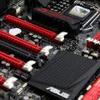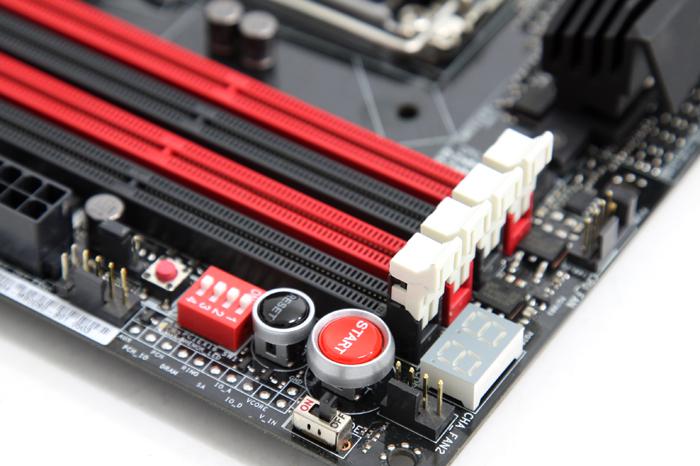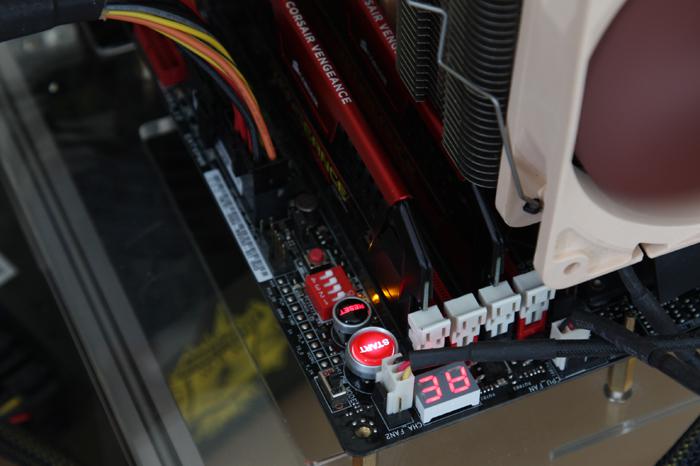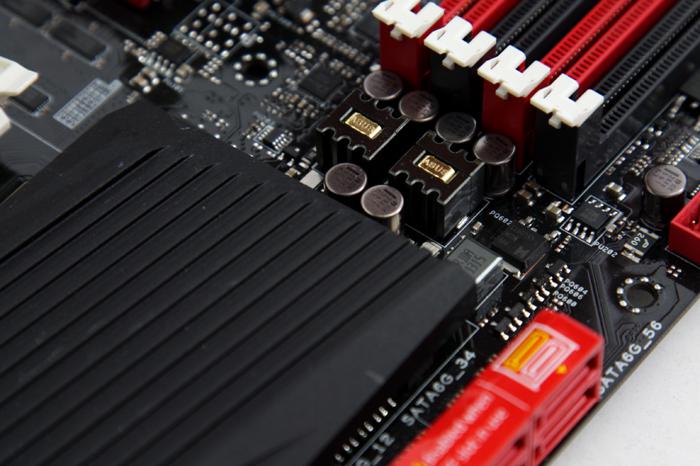Product Showcase
There's a secondary BIOS available for you should you mess up the first one. To the left another USB host ports. You'll have a plethora of USB functionality really. The micro switch all the way to the left is a DirectKey. To access the BIOS faster other than rapidly tapping the DEL key on boot up you simply press this one. It is an on-board BIOS direct access button that can be pressed during standby mode to automatically enter the BIOS setup screen when the power is turned on the next time.
The Maximus Extreme also comes with voltage monitoring points, good to see are the tiny connectors here. The voltage point is used to monitor voltages with a digital multimeter. Additional functionality of the board is that is has VGA hotwire, with the VGA Hotwire feature, plug the two-wire cable on-board and solder two wires on the VGA's voltage regulator and accurately adjust the voltage. That's obviously only for the extreme tweakers, we strongly discourage your average user to do this... quite dangerous!
Next to the go button we see a reset and power button. To the right of it there's going on something else though:
Here we can see a diagnostic POST status led and under it a Slow Mode switch, which is part of the ROG Extreme OC kit. It basically slows down the CPU when you are LN2 / subzero cooling. So for 99.999999% of you guys, this is not relevant.
See, the golden colored ASUS Mosfets? These are the new NexFET MOSFETs that can handle up to 90% efficiency in high current delivery under normal operation and better durability in half the size of standard MOSFETs. Next to it BlackWing chokes remain cool even when managing with as much as 60 amps of power with 3-5°C lower temps and minimal-loss power delivery. Japan-made 10K Black Metallic capacitors are used should last five times longer and deliver 20% greater extreme temperature endurance than generic solid state capacitors.





